That year, Hunan, Guizhou, Guangxi and Jiangsu drove thousands of miles by themselves. I watched the Yangtze River in Nanjing City, Jiangsu Province Practical tips for self-driving tours in Nanjing City, Jiangsu Province June 2021
Hunan, Guizhou, Guangxi, Hubei, Anhui, and Jiangsu drove thousands of miles by themselves. I watched the Yangtze River in Nanjing City, Jiangsu Province. Practical guide for self-driving tour in Nanjing City, Jiangsu Province [Nanjing City][34th stop][June 9, 2021]

Wonderful watch in advance

Nanjing Yuejiang Tower

Nanjing Yuejiang Tower

Nanjing Sun Yat-sen mausoleum

Nanjing Confucius Temple

Nanjing Ancient City Wall

Nanjing Ancient Jiming Temple

Nanjing Qinhuai River bank

Nanjing Olympic Square

Nanjing massacre Memorial Hall

Night view of Nanjing Zhonghua Gate

Write it in front: The self-driving journey from Chuzhou City, Anhui Province, takes 40 kilometers and reaches Nanjing City, Jiangsu Province in an hour. Start a four-day tour in Nanjing City, Jiangsu Province Nanjing Yuejiang Tower Nanjing Yangtze River Bridge Park Nanjing Bailuzhou Park Nanjing Mochou Lake Park Nanjing Xuanwu Lake Scenic Area Nanjing Tiansheng Bridge Nanjing Gaochun Old Street Nanjing Ancient Jiming Temple Zhongshan Scenic Area Sun Yat-sen Mausoleum Nanjing Presidential Palace Nanjing Meiyuan New Village Memorial Hall of the Communist Party of China Memorial Hall for Victims of the Nanjing Massacre by the Japanese Invaders Nanjing Yuhuatai

Travel report:
On May 1, 2021, Qingdao City set off by car. It lasted 40 days and traveled 10200 kilometers. It passed through 6 provinces and 30 cities, and successfully completed the self-driving thousand-mile journey plan to Hunan, Guizhou, Guangxi, Hubei, Anhui and Jiangsu

Tell me about this trip:
I don't chase any waves or take any boats. I have my own sea.
Starting is my eternal proposition. Even though I have been to many places, I am still looking forward to the unknown journey.
Someone asked me, is there any place you haven't been to?
I often joke: Yes, I have never been to Mars.
I didn't expect the opportunity to come so quickly.
At 07:00 a.m. on June 9, 2021, I drove from Chuzhou City, Anhui Province, and imagined such a scene: a gust of wind in the morning floated into the forest. Wherever it passes, the mist flows gently, the roads along the way are smooth, and the beautiful scenery of Jiangsu is accompanied by it. After driving 40 kilometers and an hour, it reaches Nanjing City, Jiangsu Province at 08.00 a.m.
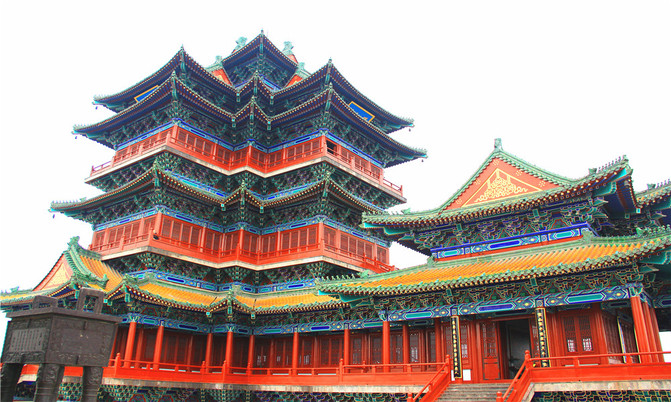
Four-day tour route in Nanjing City, Jiangsu Province:
Day1: Street View in Nanjing City, Nanjing 1912 Block, Nanjing Lion Bridge, Nanjing Olympic Sports Center
Day2: Nanjing Yuejiang Tower, Nanjing Yangtze River Bridge Park, Nanjing Bailuzhou Park, Nanjing Mochou Lake Park, Nanjing Xuanwu Lake Scenic Area, Nanjing City Wall Scenic Area, Nanjing Tiansheng Bridge Scenic Area
Day3: Nanjing Gaochun Old Street, Nanjing Ming Palace Ruins Park, Nanjing Ancient Jiming Temple, Nanjing Ming Xiaoling Scenic Area, Nanjing Confucius Temple, Nanjing Jinling First Garden Zhanyuan
Day4: Sun Yat-sen Mausoleum in Zhongshan Scenic Area, Meiling Palace in Zhongshan Scenic Area, Nanjing Presidential Palace, Nanjing Meiyuan New Village Memorial Hall of the Communist Party of China, Memorial Hall for Victims of the Nanjing Massacre by the Japanese Invaders, Nanjing Yuhuatai

Practical information:
[About Attractions]
Tour tickets: Adult ticket for Yuejiang Tower Scenic Area in Nanjing City, Jiangsu Province is 40 yuan,[10 yuan cheaper for Ctrip reservations], and parking in the scenic area is 10 yuan. There are many tourist attractions in Nanjing City, Jiangsu Province, most of which do not require tickets.
[About Accommodation]
Ctrip reservation: Home Inns Series---Standard room of Home Inns Hotel in Nanjing City, Jiangsu Province 120 yuan/Including breakfast for 2 people [Room is clean and refreshing, breakfast is good]
[About Dining]
During the self-driving journey, we experienced delicious food from all over the country, various powders and rankings recommended on a certain website, each with its own merits! Because the distance between some scenic spots is relatively long, you can bring your own drinks and snacks. After stopping and getting off at night, drink some wine and eat some local food you like to enjoy the fun of life.
[Travel Equipment Preparation]
Bring your own shooting equipment for travel:
Canon 60D kit (18-135mm IS)

Travel experience:
For a travel enthusiast, Nanjing City, Jiangsu Province is a place to visit. If you are tired of the sea of people and rows of shops in the scenic area and want to find a place where your mind can relax and relax, the secret realm of Nanjing City, Jiangsu Province, is a place to consider.

There is no need for a reason to travel, because the scenery is there!
Another meaning of travel is to discover beauty in places where others are tired of living!

Life insights:
After retirement, traveling has become an important part of my life and a habit. If I don't go out for a walk every once in a while, it feels like something is missing. I feel itchy in my heart, like grass has grown, I don't sleep well, and I don't eat well. That's weird. As long as I walk out, everything will be fine. During the journey, I climbed mountains, walked through rivers, walked into ancient villages, admired red classics, and felt at ease. I felt the majesty and beauty of the mountains and rivers of the motherland.

preface
Nanjing City, Jiangsu Province:
Nanjing is located in southeastern China, along the middle and lower reaches of the Yangtze River, and is the capital of Jiangsu Province. The baptism of vicissitudes of the "Ancient Capital of Ten Dynasties" and the splendid civilization of modern cities make Nanjing, a famous historical city surrounded by mountains and rivers, unique charm.

Learn about the history of Nanjing City, Jiangsu Province:
Mr. Sun Yat-sen once commented on Nanjing: "Nanjing is the ancient capital of China, before Beijing. Its location is in a beautiful area. Its land has mountains, deep waters, and plains. These three kinds of celestial works are in the same place. It is truly difficult to find such a good place in a metropolis of the world."
In 229 AD, Sun Quan, the Great Emperor of Wu, established the capital here and changed Moling to Jianye (changed to Jianye in 282). Since then, the Song, Qi, Liang and Chen of the Eastern Jin and Southern Dynasties successively established their capitals here. Therefore, Nanjing is known as the "Ancient Capital of the Six Dynasties". Today, the Nanjing Library retains the ruins of Jiankang City in the Six Dynasties. During the Six Dynasties, Jiankang City was the largest city in the world at that time, with a population of one million. It was the first city in the world with a population of more than one million. It had a developed economy and prosperous culture, and preserved the original date of Chinese culture in Jiangnan. Nanjing and Rome in the Six Dynasties were both known as the "two centers of classical civilization in the world." The culture of the Southern Dynasties, represented by Jiankang, had a profound impact on human history. Therefore, Nanjing has distinctive characteristics among the "Four Ancient Capitals".
On April 23, 1949, the People's Liberation Army captured Nanjing, making it one of the 13 municipalities directly under the Central Government in the country at the beginning of the founding of the People's Republic of China.

Memory:
For Qingdao people from the seaside, they may have been watching the beautiful scenery of the sea for too long. The attraction of the sea is no longer so strong. I always look forward to the scenery of various places in Nanjing City, Jiangsu Province. I yearn for the long history of Nanjing City, Jiangsu Province, and the beautiful scenery of Nanjing City, Jiangsu Province. The unforgettable food in Nanjing City, Jiangsu Province always affects and attracts me. The wonderful imagination that travels through time and space forces me to embark on this mysterious journey.
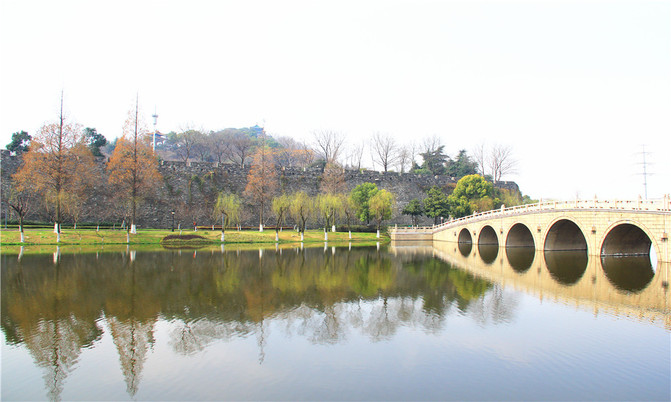
A route map of the thousand-mile self-driving journey in Hunan, Guizhou, Guangxi, Hubei, Anhui and Jiangsu;
Depart from Qingdao City on May 1, 2021---Yueyang City, Hunan Province--Changsha City, Hunan Province--Shaoshan City, Hunan Province--Hengyang City, Hunan Province--Yongzhou City, Hunan Province--Loudi City, Hunan Province--Shaoyang City, Hunan Province--Huaihua City, Hunan Province--Zhangjiajie City, Hunan Province--Xiangxi Tujia and Miao Autonomous Prefecture, Hunan Province--Jishou City, Hunan Province--Tongren City, Guizhou Province--Zunyi City, Guizhou Province--Anshun City, Guizhou Province--Guiyang City, Guizhou Province--Qiandongnan Miao and Dong Autonomous Prefecture, Guizhou Province--Qiannan Buyi and Miao Autonomous Prefecture, Guizhou Province--Hechi City, Guangxi Province--Baise City, Guangxi Province--Chongzuo City, Guangxi Province---NanNing City, Guangxi Province--Guigang City, Guangxi Province--Laibin City, Guangxi Province--Liuzhou City, Guangxi Province--Yangshuo City, Guangxi Province--Guilin City, Guangxi Province--Chibi City, Hubei Province--Huanggang City, Hubei Province--Xuancheng City, Anhui Province--Wuhu City, Anhui Province--Hefei City, Anhui Province--Chuzhou City, Anhui Province--Nanjing City, Jiangsu Province--Yangzhou City, Jiangsu Province--Qingdao City

Budget for self-driving travel:
According to my travel experience, as long as you don't purchase items for long-distance self-driving travel, stay in express hotels or farmhouses, don't eat too lavishly, and reduce the cost of visiting scenic spots, the couple can basically guarantee all expenses for 400 yuan per day.

Overview of the itinerary;[Nanjing City, Jiangsu]
Time: 4 days from June 9 to June 12, 2021
Character; couple 2
Method: Self-service tour
Vehicle; self-driving car
Cost: 800 yuan per person (including gasoline, high-speed fee, food and accommodation fee, tickets and other expenses)

A pleasant trip:
As for Nanjing City, Jiangsu Province, in the past, due to time constraints when going to Jiangsu, we rushed past Nanjing City, Jiangsu Province. This time, the 34th stop of the thousand-mile self-driving journey to Hunan, Guizhou, Guangxi, Hubei, Anhui and Jiangsu Province was arranged in Nanjing City, Jiangsu Province. I drove from Chuzhou City, Anhui Province to visit Nanjing City, Jiangsu Province. I was intoxicated by the beautiful scenery along the car and every bit of Anhui. I started my trip to Nanjing City, Jiangsu Province.

This is the most suitable place for couples to travel, stroll together, and interpret the magnificent and flexible mountains and rivers amidst natural creation. Enjoy the beautiful scenery surrounded by undulating peaks and lush trees, taste the delicious food of Nanjing City, Jiangsu Province, and walk by the Yangtze River in Nanjing City, Jiangsu Province at night to have a panoramic view of the scenery of Nanjing City, Jiangsu Province.

[main text]
1. The origin of Nanjing City, Jiangsu Province
For Nanjing City, Jiangsu Province, after the Spring Festival this year, I made a thousand-mile travel plan to Hunan, Guizhou, Guangxi and Anhui. In May, during the intoxicating season in Hunan, Guizhou, Guangxi and Anhui, the couple walked all the way south to see the beautiful scenery of Nanjing City, Jiangsu Province. Breathe the air of Nanjing City, Jiangsu Province, taste the delicious food of Nanjing City, Jiangsu Province, and express your pride.
2. Preparation for departure
There is no reason to worry about, come on a trip that you want to go. For travel, make all kinds of preparations for departure, understand the weather conditions of the destination, and make a list of items you need.
3. The itinerary of Hunan, Guizhou, Guangxi, Hubei, Anhui and Jiangsu driving thousands of miles to Nanjing City, Jiangsu:
Day1: Street View in Nanjing City, Nanjing 1912 Block, Nanjing Lion Bridge, Nanjing Olympic Sports Center
Day2: Nanjing Yuejiang Tower, Nanjing Yangtze River Bridge Park, Nanjing Bailuzhou Park, Nanjing Mochou Lake Park, Nanjing Xuanwu Lake Scenic Area, Nanjing City Wall Scenic Area, Nanjing Tiansheng Bridge Scenic Area
Day3: Nanjing Gaochun Old Street, Nanjing Ming Palace Ruins Park, Nanjing Ancient Jiming Temple, Nanjing Ming Xiaoling Scenic Area, Nanjing Jinling First Garden Zhanyuan, Nanjing Confucius Temple
Day4: Sun Yat-sen Mausoleum in Zhongshan Scenic Area, Meiling Palace in Zhongshan Scenic Area, Nanjing Presidential Palace, Nanjing Meiyuan New Village Memorial Hall of the Communist Party of China, Memorial Hall for Victims of the Nanjing Massacre by the Japanese Invaders, Nanjing Yuhuatai

Traffic information:
1. Self-driving trains [Chuzhou City, Anhui--Nanjing City, Jiangsu]
Departure time in Chuzhou City, Anhui Province on June 9, 2021-arrival time in Nanjing City, Jiangsu Province on June 9, 2021 at 08.00, mileage 40 kilometers, 1 hour drive

About the author:
I am a freelance travel enthusiast and a photography enthusiast. I mainly take scenery photos in ordinary times. In my spare time, I like to run around, visit various places, and take pictures of the beautiful local scenery and customs. I love photography, and I will never let go of all the beautiful people and things on the road. I think that the freeze at that moment will constitute all my memories. If you want to know more about my photography and travel notes, you can follow my:
Ctrip Travel: Le Ya School Travel Guide
If you have any questions about travel, feel free to leave a message to me

Memory:
Hunan, Guizhou, Guangxi, Hubei, Anhui and Jiangsu self-driving journey [34th stop] The essence of Nanjing City, Jiangsu:
When you lower your head, you realize that there are no wings left in the sky, but birds flying.
Self-driving tour route in Chuzhou City, Anhui Province: Depart from Chuzhou City, Anhui Province---Nanjing City, Jiangsu Province [40 kilometers, 1 hour]
My four-day tour route to Nanjing City, Jiangsu Province:
Day1: Street View in Nanjing City, Jiangsu Province
Nanjing is located in southeastern China, along the middle and lower reaches of the Yangtze River, and is the capital of Jiangsu Province. The baptism of vicissitudes of the "Ancient Capital of Ten Dynasties" and the splendid civilization of modern cities make Nanjing, a famous historical city surrounded by mountains and rivers, unique charm.

The Yangtze River, the longest river in China, spans Nanjing City and divides the city into two areas: Jiangnan and Jiangbei.

The rows of high-rise buildings in the "Xinjiekou" in the center of Nanjing City echo historical scenic spots such as the Ming City Wall Ruins and the Presidential Palace, making the past period of history seem within reach.

The stops and looks in front of the Ming Xiao Mausoleum and Sun Yat-sen Mausoleum, and the past times in front of Wuyi Lane and the Old East Gate are all vivid memories left by the years in Nanjing.

Walking slowly along the Confucius Temple area of the Qinhuai River, which "nurtures" the city, the appearance of Nanjing's Laocheng District is still clearly visible, and old people can still be heard speaking standard Nanjing dialect along the way.

Nanjing may not be filled with busy crowds and noisy streets like other cities. It is more of a cultural heritage and historical imprint that has been accumulated over thousands of years, allowing you to experience the civilization and baptism of the ancient capital of civilization during your visit.
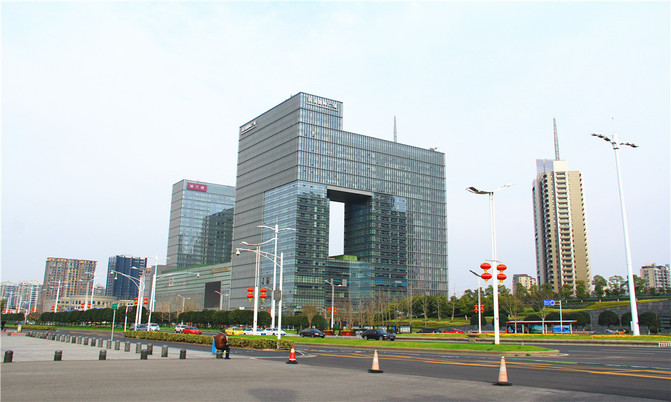
Street View of Nanjing City, Jiangsu Province

Street View of Nanjing City, Jiangsu Province

Street View of Nanjing City, Jiangsu Province

Street View of Nanjing City, Jiangsu Province

Street View of Nanjing City, Jiangsu Province

Street View of Nanjing City, Jiangsu Province

Street View of Nanjing City, Jiangsu Province

Street View of Nanjing City, Jiangsu Province

Street View of Nanjing City, Jiangsu Province

Street View of Nanjing City, Jiangsu Province

Street View of Nanjing City, Jiangsu Province

Street View of Nanjing City, Jiangsu Province
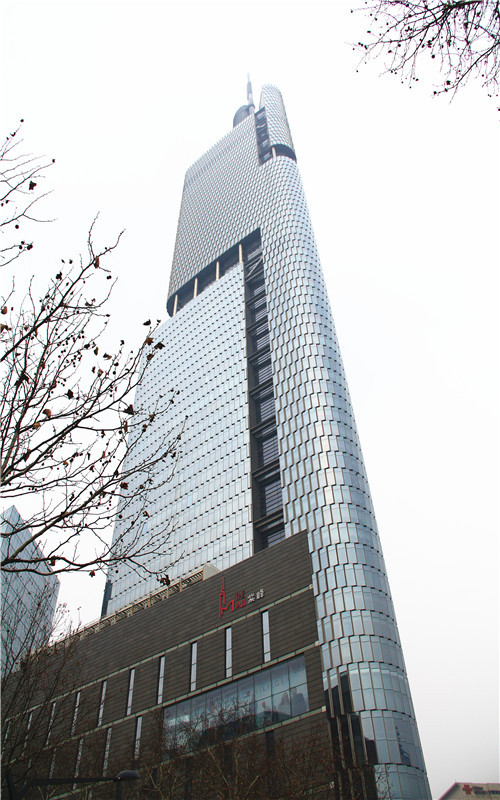
Street View of Nanjing City, Jiangsu Province

Street View of Nanjing City, Jiangsu Province

Street View of Nanjing City, Jiangsu Province

Street View of Nanjing City, Jiangsu Province

Street View of Nanjing City, Jiangsu Province

Street View of Nanjing City, Jiangsu Province

Street View of Nanjing City, Jiangsu Province

Street View of Nanjing City, Jiangsu Province

Street View of Nanjing City, Jiangsu Province

Street View of Nanjing City, Jiangsu Province

Street View of Nanjing City, Jiangsu Province

Street View of Nanjing City, Jiangsu Province

Street View of Nanjing City, Jiangsu Province

Street View of Nanjing City, Jiangsu Province

Street View of Nanjing City, Jiangsu Province

Street View of Nanjing City, Jiangsu Province

Day1: Nanjing 1912 Block [Free Tickets]
Nanjing 1912 Street was named in commemoration of the founding of the Republic of China and Sun Yat-sen's becoming president. It has special significance to Nanjing.

The buildings of the 1912 block in Nanjing are simple and exquisite in the Republic of China, and the integration of classics and modernity will make everyone who has visited it unforgettable.

Nanjing's 1912 block will become Nanjing's business card like Shanghai Xintiandi. It is full of nostalgia and everyone likes it.
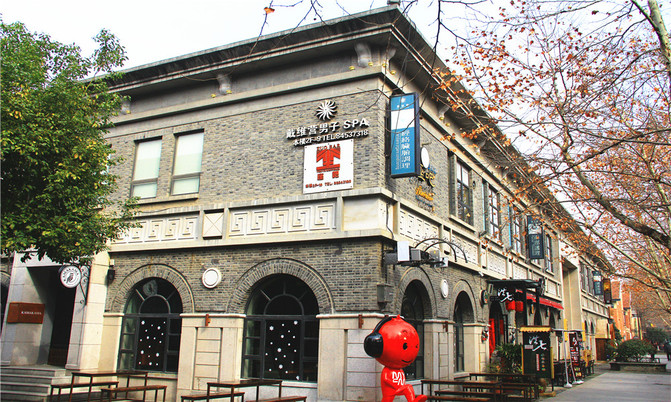
Nanjing 1912 Street has a profound cultural atmosphere in Nanjing. Nanjing 1912 Street is also a place with unique charm. The modern 1912 Street is full of fashion.

Nanjing 1912 Block

Nanjing 1912 Block

Nanjing 1912 Block

Nanjing 1912 Block

Nanjing 1912 Block

Nanjing 1912 Block

Nanjing 1912 Block

Nanjing 1912 Block

Nanjing 1912 Block

Nanjing 1912 Block

Nanjing 1912 Block

Nanjing 1912 Block

Nanjing 1912 Block

Nanjing 1912 Block

Nanjing 1912 Block

Nanjing 1912 Block

Nanjing 1912 Block

Day1: Nanjing Shiziqiao Food Street [Free Tickets]
Shiziqiao is located near Hunan Road, Gulou District, Nanjing City. Shiziqiao Food Street is a famous food street in Nanjing and is synonymous with modernity, fashion and delicacy. The block is located in the middle of Hunan Road, with a total length of 330 meters and a width of 12-16 meters.

Nanjing Shiziqiao Food Street

Nanjing Shiziqiao Food Street

Nanjing Shiziqiao Food Street

Nanjing Shiziqiao Food Street

Nanjing Shiziqiao Food Street

Nanjing Shiziqiao Food Street

Nanjing Shiziqiao Food Street

Nanjing Shiziqiao Food Street

Day1: Nanjing Olympic Sports Center [Free Entrance]
Nanjing Olympic Sports Center is located in Hexi New City, Jianye District, Nanjing City, Jiangsu Province. It is a representative of Asia's A-class stadium and the world's fifth-generation sports building.

The Nanjing Olympic Sports Center is the main venue of the 2005 10th National Games, the 2013 Nanjing Asian Youth Games and the 2014 Nanjing Youth Olympic Games, as well as the home court of Jiangsu Suning Football Club.

Nanjing Olympic Sports Center is a multi-functional composite national-level gymnasium. The main building is "four venues and two centers", including a stadium (including training ground), a gymnasium, a swimming pool, a tennis stadium, a sports technology center and a cultural and sports entrepreneurship center.

The Nanjing Olympic Sports Center officially started on August 18, 2002, was completed at the end of 2004, and was put into operation on May 1, 2005, with a total investment of 2.167 billion yuan. In 2007, it won the 11th International Outstanding Sports Buildings and Sports Facilities Gold Medal. It is the first sports building in China to receive this honor.

Nanjing Olympic sports Center

Nanjing Olympic sports Center

Nanjing Olympic sports Center

Nanjing Olympic sports Center

Nanjing Olympic sports Center

Nanjing Olympic sports Center

Nanjing Olympic sports Center

Nanjing Olympic sports Center

Nanjing Olympic sports Center

Nanjing Olympic sports Center

Nanjing Olympic sports Center

Nanjing Olympic sports Center

Nanjing Olympic sports Center

Nanjing Olympic sports Center

Nanjing Olympic sports Center

Nanjing Olympic sports Center

Nanjing Olympic sports Center

Nanjing Olympic sports Center

Nanjing Olympic sports Center

Day2: Nanjing Yuejiang Tower [Purchase Tickets]
Yuejiang Tower is located on the top of Lion Mountain in Gulou District, Nanjing City, Jiangsu Province. It stands tall on the banks of the Yangtze River and drinks the sunset and swallows the fog. It is one of China's top ten famous cultural buildings and the four famous buildings in Jiangnan. It is also the main attraction of Nanjing Yuejiang Tower Scenic Area, a national AAAA tourist attraction, and one of the 48 scenic spots in New Jinling. It is known as the "First Tower in Jiangnan."

Nanjing Yuejiang Tower Scenic Area

Nanjing Yuejiang Tower Scenic Area

Nanjing Yuejiang Tower Scenic Area

Nanjing Yuejiang Tower Scenic Area

Nanjing Yuejiang Tower Scenic Area

Nanjing Yuejiang Tower Scenic Area

Nanjing Yuejiang Tower Scenic Area

Nanjing Yuejiang Tower Scenic Area

Nanjing Yuejiang Tower Scenic Area

Nanjing Yuejiang Tower Scenic Area
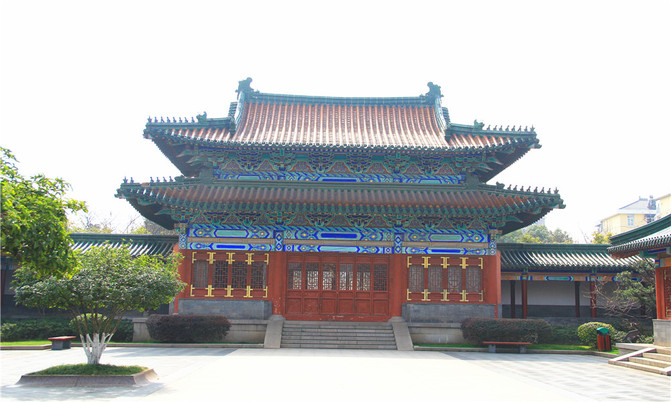
Nanjing Yuejiang Tower Scenic Area--Jinghai Temple

Nanjing Yuejiang Tower Scenic Area--Jinghai Temple

Nanjing Yuejiang Tower Scenic Area

Nanjing Yuejiang Tower Scenic Area--Wanxian Pavilion

Nanjing Yuejiang Tower Scenic Area--Wanxian Pavilion

Nanjing Yuejiang Tower Scenic Area--Ancient Fort

Nanjing Yuejiang Tower Scenic Area

Nanjing Yuejiang Tower Scenic Area

Nanjing Yuejiang Tower Scenic Area---Sun Yat-sen's River View Pavilion

Nanjing Yuejiang Tower Scenic Area---Sun Yat-sen's River View Pavilion

Nanjing Yuejiang Tower Scenic Area

Nanjing Yuejiang Tower Scenic Area

Nanjing Yuejiang Tower Scenic Area

Nanjing Yuejiang Tower, Wuhan Yellow Crane Tower, Nanchang Tengwang Tower, and Yueyang Tower are the four most distinctive buildings in China.

The characteristics of Yuejiang Tower are: first, it is high. The mountain height is 78 meters high, the building is 52 meters high, and the total height is more than 130 meters. It is the tallest famous building

Yuejiang Tower's characteristics are: third, it is rich in connotation, has many historical and cultural accumulations, and has left many traces and works of historical celebrities

The fourth characteristic of Yuejiang Tower is its royal style, because only Nanjing has produced ten and twenty-six emperors. The buildings here are all built according to the emperor's specifications.

In 1997, the Nanjing City People's Government officially approved the construction of Yuejiang Tower, which was not until September 2001, when Yuejiang Tower was officially completed. Since then, the 600-year history of "having no memories" ended.

yuejianglou

yuejianglou

yuejianglou

yuejianglou

yuejianglou

yuejianglou

yuejianglou

yuejianglou

yuejianglou

yuejianglou

yuejianglou

yuejianglou

yuejianglou

yuejianglou

yuejianglou

yuejianglou
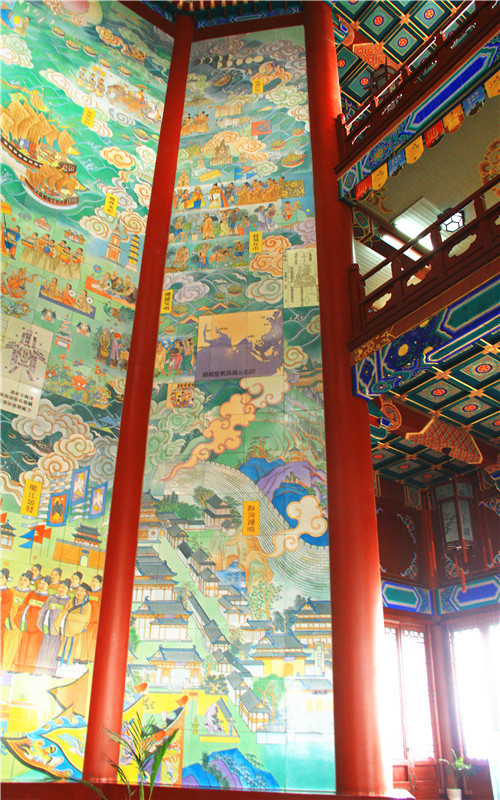
yuejianglou

yuejianglou

yuejianglou

yuejianglou

yuejianglou

yuejianglou

yuejianglou

yuejianglou

yuejianglou

yuejianglou

yuejianglou

yuejianglou

yuejianglou

yuejianglou

Yuejiang Tower Scenic Area

Yuejiang Tower Scenic Area

Yuejiang Tower Scenic Area

Yuejiang Tower Scenic Area

Yuejiang Tower Scenic Area

Yuejiang Tower Scenic Area

Yuejiang Tower Scenic Area

Day2: Nanjing Yangtze River Bridge Park [Free Tickets]
Nanbao Park of Nanjing Yangtze River Bridge is located at Xiaguan Baota Bridge, Gulou District, Nanjing City, Jiangsu Province. It was built by Nanjing City Urban Construction Bureau in 1970 and completed on March 24, 1971. It is one of the parks opened to the public free of charge by the Nanjing City People's Government.

Nanjing Yangtze River Bridge Park

Nanjing Yangtze River Bridge Park

Nanjing Yangtze River Bridge Park

Nanjing Yangtze River Bridge Park

Nanjing Yangtze River Bridge Park

Nanjing Yangtze River Bridge Park

Nanjing Yangtze River Bridge Park

Nanjing Yangtze River Bridge Exhibition Hall

Nanjing Yangtze River Bridge Exhibition Hall
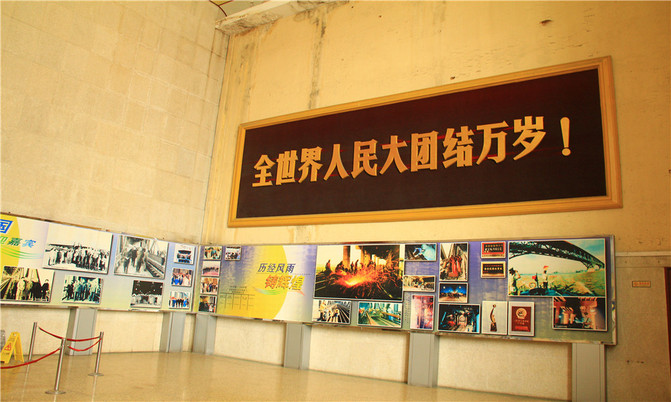
Nanjing Yangtze River Bridge Exhibition Hall

Nanjing Yangtze River Bridge Exhibition Hall

Nanjing Yangtze River Bridge Exhibition Hall
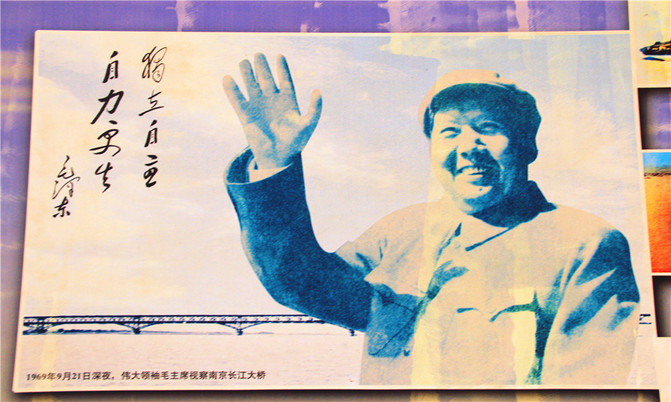
Nanjing Yangtze River Bridge Exhibition Hall

Nanjing Yangtze River Bridge is majestic

Nanjing Yangtze River Bridge is majestic

Nanjing Yangtze River Bridge is majestic

Nanjing Yangtze River Bridge is majestic

Nanjing Yangtze River Bridge is majestic

Day2: Nanjing Xuanwu Lake Scenic Area [Free Tickets]
Nanjing Xuanwu Lake Scenic Area is located in Xuanwu District, Nanjing City, Jiangsu Province. It is a national-level scenic spot at the foot of Zijin Mountain and the largest urban park in Jiangnan. It is known as the "Pearl of Jinling" and is also known as the "Three Famous Lakes in Jiangnan" together with Hangzhou West Lake and Jiaxing South Lake.

Xuanwu Lake has a radius of nearly five miles and is divided into five continents (Huanzhou, Yingzhou, Lingzhou, Liangzhou, and Cuizhou). The embankments and bridges of the continents are connected and integrated, with mountains and waters everywhere. Around the lake, there are many scenic spots such as Xuanwu Dawn, Beihu Art Workshop, Xuanpu, Xuanwu Smoke Willow, Wu Temple Ancient Gate, Mingcheng Exploration, and Ancient Yuewu Terrace.

Nanjing Xuanwu Lake Scenic Area is a landscape garden and a cultural resort. Many literati and literati have left poems here, such as Xiao Tong, Li Yu, Wei Zhuang, Du Mu, Liu Yuxi, Li Shangyin, Li Bai, Ouyang Xiu, Wang Anshi, Cao Xueqin, Guo Moruo, etc. "Qiantang is more beautiful than West Lake, and Jinling is more beautiful than Houhu. "Ouyang Xiu, a litterateur of the Northern Song Dynasty, once praised Xuanwu Lake so much.

Xuanwu Lake is a national AAAA tourist attraction with a collection of scenic spots and historic sites.

Nanjing Xuanwu Lake Scenic Area

Nanjing Xuanwu Lake Scenic Area

Nanjing Xuanwu Lake Scenic Area

Nanjing Xuanwu Lake Scenic Area

Nanjing Xuanwu Lake Scenic Area

Nanjing Xuanwu Lake Scenic Area

Nanjing Xuanwu Lake Scenic Area
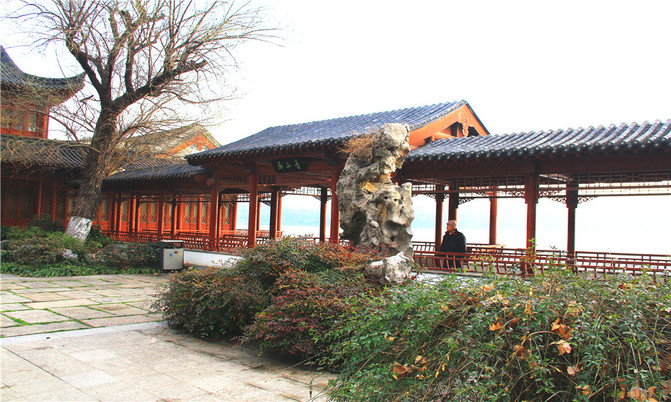
Nanjing Xuanwu Lake Scenic Area

Nanjing Xuanwu Lake Scenic Area
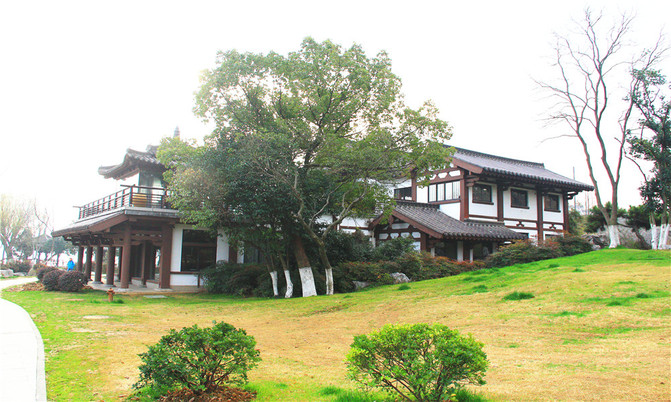
Nanjing Xuanwu Lake Scenic Area

Nanjing Xuanwu Lake Scenic Area

Nanjing Xuanwu Lake Scenic Area
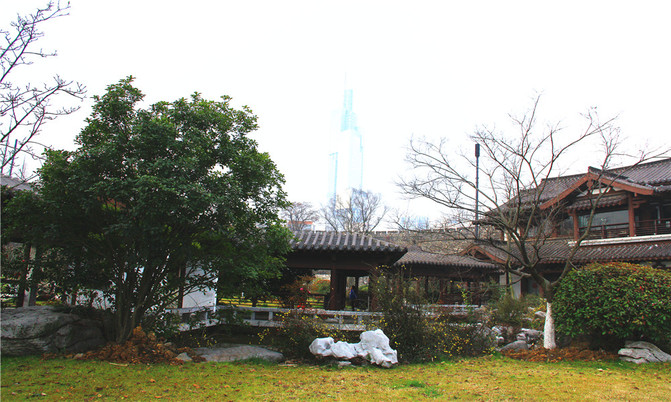
Nanjing Xuanwu Lake Scenic Area

Nanjing Xuanwu Lake Scenic Area
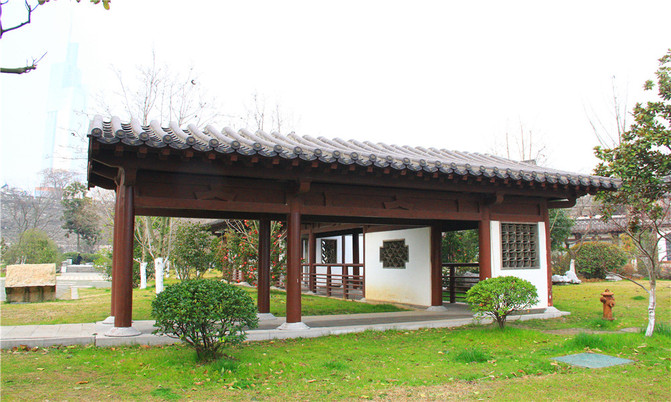
Nanjing Xuanwu Lake Scenic Area

Nanjing Xuanwu Lake Scenic Area

Nanjing Xuanwu Lake Scenic Area

Nanjing Xuanwu Lake Scenic Area

Nanjing Xuanwu Lake Scenic Area

Nanjing Xuanwu Lake Scenic Area
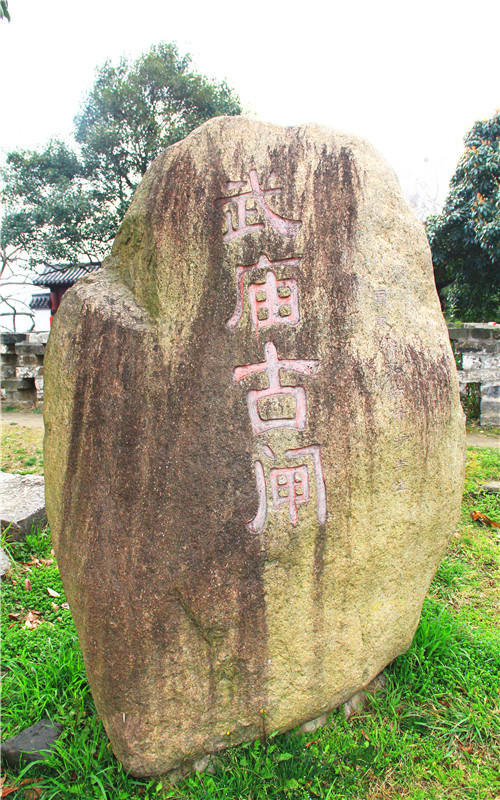
Nanjing Xuanwu Lake Scenic Area----Wumiao Ancient Gate

Nanjing Xuanwu Lake Scenic Area----Wumiao Ancient Gate

Nanjing Xuanwu Lake Scenic Area----Wumiao Ancient Gate

Nanjing Xuanwu Lake Scenic Area----Wumiao Ancient Gate

Nanjing Xuanwu Lake Scenic Area----Wumiao Ancient Gate

Nanjing Xuanwu Lake Scenic Area----Wumiao Ancient Gate

Nanjing Xuanwu Lake Scenic Area---Tiefo Town Water

Nanjing Xuanwu Lake Scenic Area---Tiefo Town Water
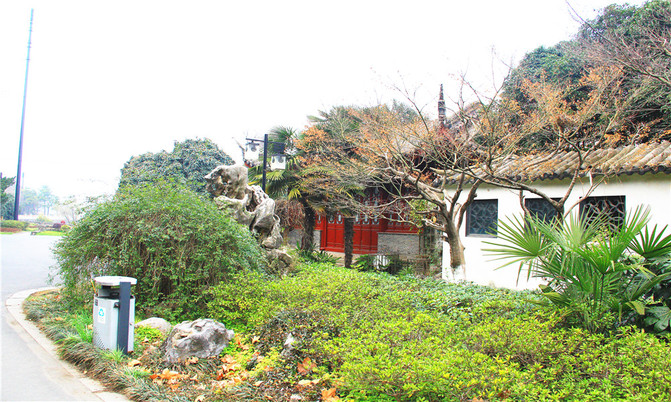
Nanjing Xuanwu Lake Scenic Area

Nanjing Xuanwu Lake Scenic Area

Nanjing Xuanwu Lake Scenic Area

Nanjing Xuanwu Lake Scenic Area

Nanjing Xuanwu Lake Scenic Area

Day2: Nanjing Mochou Lake Park [Free Tickets]
Mochou Lake is located on the west side of the Qinhuai River outside Jianye District, Nanjing City, Jiangsu Province. The total scenic area is 0.511 square kilometers, of which the lake area is 0.323 square kilometers and the land area is 0.187 square kilometers. It is the second largest lake in Nanjing's Main City after Xuanwu Lake, and is known as the "No. 1 Scenic Spot in Jinling."

During the Six Dynasties, the south bank of the Yangtze River moved northward and Mochou Lake was formed. During the Southern Tang Dynasty, it was called Hengtang, which was also known as Shicheng Lake because it was close to Shitou City.

In the early years of the Ming Dynasty, Mochou Lake built more than ten towers along the lakeside; in the middle of the Ming Dynasty, Mochou Lake was the exclusive property of Xu Da, a descendant of Xu Da, Duke of Wei, and became one of the famous gardens in Jinling.

In the fifty-eighth year of Qianlong of the Qing Dynasty (1793), Mochou Lake was renovated on a large scale, and more than ten buildings such as "Yujin Tang" were built along the lake; during the Xianfeng period, buildings and flower trees were destroyed in the war; in the tenth year of Tongzhi of the Qing Dynasty (1871), Mochou Lake was rebuilt, and the lake scenery gradually returned to its old one.

In the 18th year of the Republic of China (1929), Mochou Lake was turned into a park.

Nanjing Mochou Lake Park

Nanjing Mochou Lake Park

Nanjing Mochou Lake Park

Nanjing Mochou Lake Park--Water Garden

Nanjing Mochou Lake Park--Water Garden

Nanjing Mochou Lake Park--Water Garden

Nanjing Mochou Lake Park--Water Garden

Nanjing Mochou Lake Park---Mochou Former Residence

Nanjing Mochou Lake Park---Mochou Former Residence

Nanjing Mochou Lake Park---Mochou Former Residence

Nanjing Mochou Lake Park---Mochou Former Residence

Nanjing Mochou Lake Park---Mochou Former Residence

Nanjing Mochou Lake Park---Mochou Former Residence

Nanjing Mochou Lake Park---Mochou Former Residence

Nanjing Mochou Lake Park---Mochou Former Residence

Nanjing Mochou Lake Park---Mochou Former Residence

Nanjing Mochou Lake Park---Mochou Former Residence

Day2: Nanjing Bailuzhou Park [Purchase Tickets]
Nanjing Bailuzhou Park is located in the southeast corner of Nanjing City and is the largest park in the south of Nanjing. During the Yongle Period of the Ming Dynasty, the garden was the villa of Xu Da, the founding father of the country, so it was called Xu Taifu Garden or Xu Zhongshan Garden.

Nanjing Bailuzhou Park

Nanjing Bailuzhou Park

Nanjing Bailuzhou Park Night

Nanjing Bailuzhou Park Night

Nanjing Bailuzhou Park Night

Nanjing Bailuzhou Park Night

Nanjing Bailuzhou Park Night

Nanjing Bailuzhou Park Night

Nanjing Bailuzhou Park Night

Nanjing Bailuzhou Park Night

Nanjing Bailuzhou Park Night

Nanjing Bailuzhou Park Night

Nanjing Bailuzhou Park Night

Nanjing Bailuzhou Park Night

Nanjing Bailuzhou Park Night

Nanjing Bailuzhou Park Night

Nanjing Bailuzhou Park Night

Nanjing Bailuzhou Park Night

Nanjing Bailuzhou Park Night

Nanjing Bailuzhou Park Night

Nanjing Bailuzhou Park Night

Nanjing Bailuzhou Park Night

Nanjing Bailuzhou Park Night

Nanjing Bailuzhou Park Night

Day2: Nanjing City Wall Scenic Area [Purchase Tickets]
In October 1956, Nanjing Ming City Wall was included in multiple sections as cultural relics protection units in Jiangsu Province; in January 1988, the entire section of Nanjing Ming City Wall was confirmed as a national key cultural relics protection unit. In November 2012, the Beijing City Wall, as the city led by the "China Ming and Qing Dynasties City Wall" project, was included in the preliminary list of China's World Cultural Heritage.

Nanjing City Wall Scenic Area

Nanjing City Wall Scenic Area
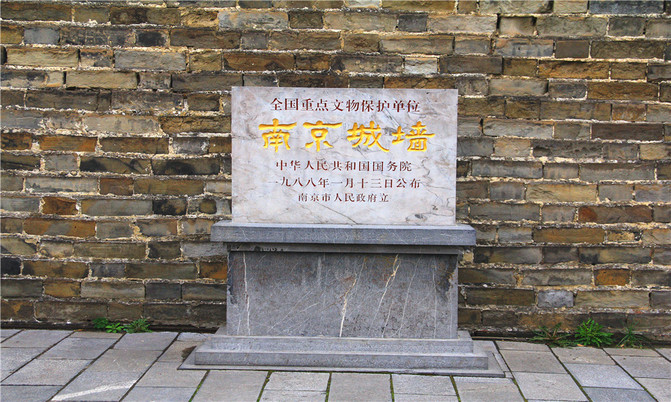
Nanjing City Wall Scenic Area

Nanjing City Wall Scenic Area

Nanjing City Wall Scenic Area

Nanjing City Wall Scenic Area

Day2: Nanjing Tiansheng Bridge Scenic Area [Purchase Tickets]
Nanjing Tianshengqiao Scenic Area is located 48 kilometers away from the southern suburbs of Nanjing, 3 kilometers west of Lishui, and 18 kilometers away from Nanjing Lukou International Airport. It is passed by Ninggao, Ninghang, Yanjiang and other expressways.
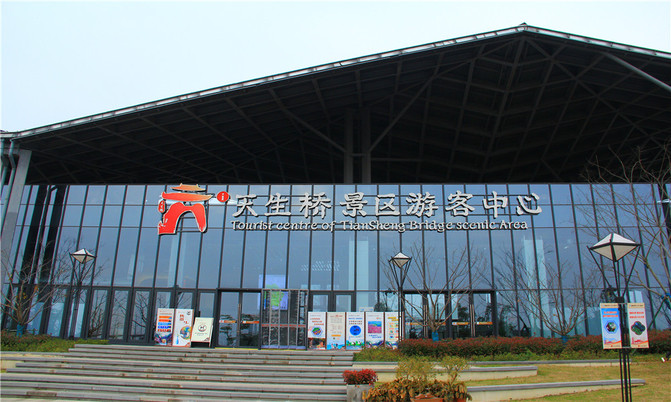
It is a tourist attraction in the suburbs of Nanjing, with lush vegetation and beautiful scenery. It is a tourist attraction in the suburbs of Nanjing. It is the new 48 scenic spots in Jinling. It is Nanjing City Tourist Resort, National AAAA Scenic Spot, National Water Conservancy Scenic Spot, Key Cultural Relics Protection Units in Jiangsu Province, Jiangsu Province. Tourism Resort (Experimental) Zone, Nanjing City Self-Driving Tour Base.

Here you can listen to the mythical legends of Fenghuang Well on the Yanzhi River and appreciate the steep, deep and beautiful scenery of the Small Three Gorges.

Nanjing Tiansheng Bridge Scenic Area

Nanjing Tiansheng Bridge Scenic Area

Nanjing Tiansheng Bridge Scenic Area

Nanjing Tiansheng Bridge Scenic Area
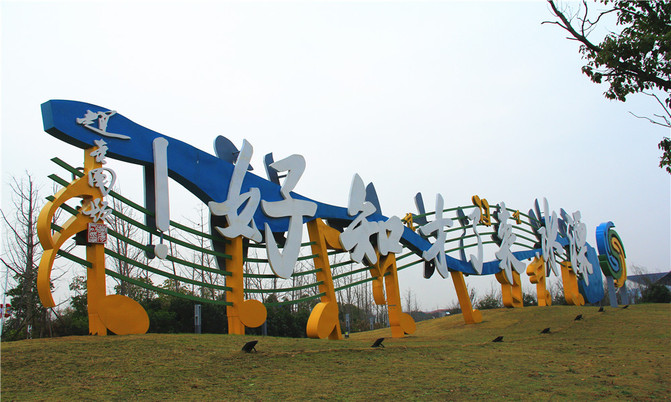
Nanjing Tiansheng Bridge Scenic Area

Nanjing Tiansheng Bridge Scenic Area

Nanjing Tiansheng Bridge Scenic Area

Nanjing Tiansheng Bridge Scenic Area---Shihai

Nanjing Tiansheng Bridge Scenic Area---Shihai

Nanjing Tiansheng Bridge Scenic Area---Shihai

Nanjing Tiansheng Bridge Scenic Area---Shihai

Nanjing Tiansheng Bridge Scenic Area---Shihai

Nanjing Tiansheng Bridge Scenic Area---Shihai

Nanjing Tiansheng Bridge Scenic Area---Shihai

Nanjing Tiansheng Bridge Scenic Area---Sea of Love

Nanjing Tiansheng Bridge Scenic Area---Sea of Love

Nanjing Tiansheng Bridge Scenic Area---Sea of Love

Nanjing Tiansheng Bridge Scenic Area---Sea of Love

Nanjing Tiansheng Bridge Scenic Area---Sea of Love

Nanjing Tiansheng Bridge Scenic Area---Sea of Love
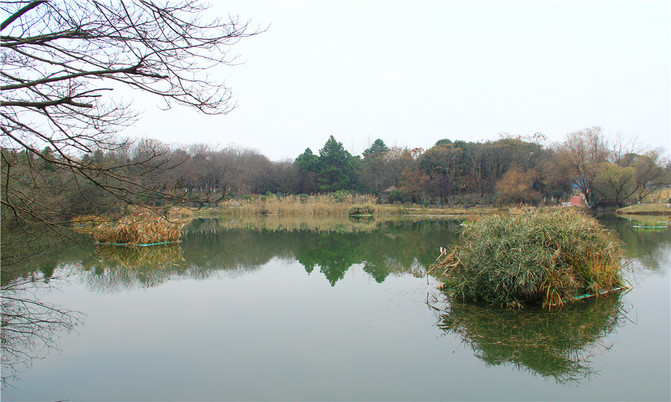
Nanjing Tiansheng Bridge Scenic Area---Sea of Love

Nanjing Tiansheng Bridge Scenic Area---Sea of Love

Nanjing Tiansheng Bridge Scenic Area---Sea of Love

Nanjing Tiansheng Bridge Scenic Area---Sea of Love

Nanjing Tiansheng Bridge Scenic Area---Sea of Love

Nanjing Tiansheng Bridge Scenic Area---Cruise Wharf

Day3: Nanjing Confucius Temple [Free Tickets]
Nanjing Confucius Temple, namely Nanjing Confucius Temple and Nanjing Confucian Temple, is located on Gongyuan Street on the north bank of the Qinhuai River in Qinhuai District, Nanjing, Jiangsu Province, west of Jiangnan Gongyuan. It is the place where Confucius is worshipped and sacrificed. It is the four major Confucian temples in China. It is the hub of ancient Jiangnan culture in China and a place where Jinling's historical humanities gather. It is not only the cultural and educational center of Nanjing during the Ming and Qing Dynasties, but also the cultural and educational building complex ranked first among the southeastern provinces. It is now an important part of the Qinhuai scenery belt of Confucius Temple.

Confucius Temple is known as a scenic spot in Qinhuai and has become a characteristic landscape area in the ancient capital of Nanjing. It is China's largest traditional ancient market market. It is China's four major downtown areas, along with Shanghai's City God Temple, Suzhou's Xuanmiao Temple and Beijing Tianqiao.

Nanjing Confucius Temple

Nanjing Confucius Temple

Nanjing Confucius Temple

Nanjing Confucius Temple

Nanjing Confucius Temple

Nanjing Confucius Temple

Nanjing Confucius Temple

Nanjing Confucius Temple

Nanjing Confucius Temple

Nanjing Confucius Temple

Nanjing Confucius Temple

Nanjing Confucius Temple

Nanjing Confucius Temple

Nanjing Confucius Temple
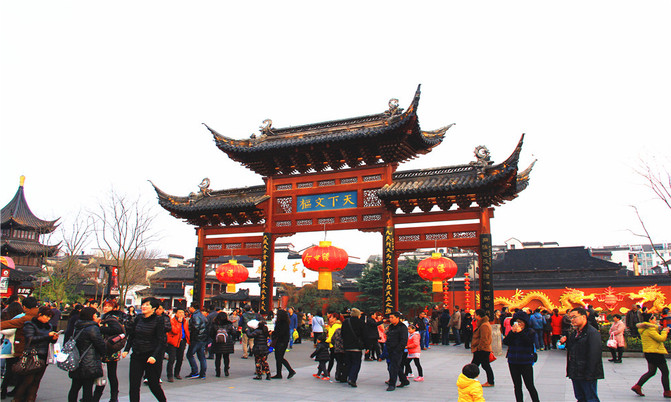
Nanjing Confucius Temple

Nanjing Confucius Temple

Nanjing Confucius Temple

Nanjing Confucius Temple

Nanjing Confucius Temple

Nanjing Confucius Temple

Nanjing Confucius Temple

Nanjing Confucius Temple
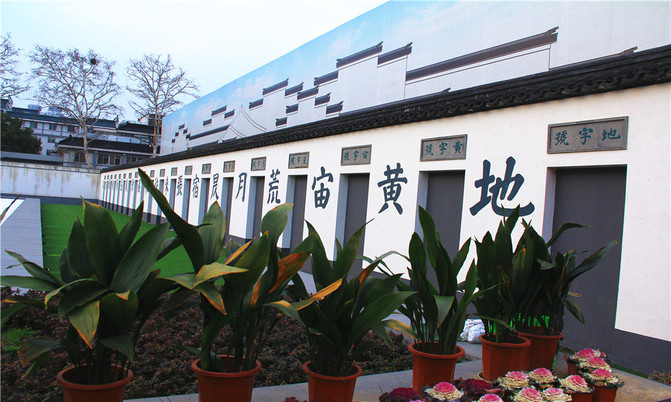
Nanjing Confucius Temple

Nanjing Confucius Temple

Nanjing Confucius Temple

Nanjing Confucius Temple

Nanjing Confucius Temple

Nanjing Confucius Temple

Nanjing Confucius Temple

Nanjing Confucius Temple

Nanjing Confucius Temple
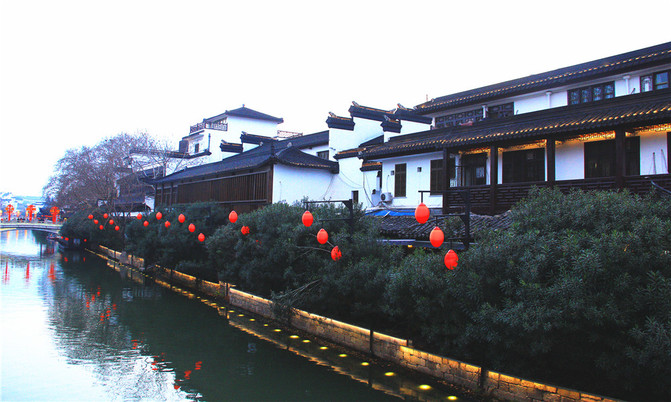
Nanjing Confucius Temple

Nanjing Confucius Temple

Day3: Zhanyuan, the No. 1 Park in Jinling, Nanjing [Purchase Tickets]
Zhanyuan is one of the four famous gardens in the south of the Yangtze River. It is the oldest ancient Ming Dynasty garden in Nanjing.

The garden is named "Zhanyuan" after Ouyang Xiu's poem,"Looking at the jade hall is like in the sky."

In the second year of Shunzhi of the Qing Dynasty, Zhanyuan became the left governor of Jiangnan Province.

Emperor Qianlong visited Jiangnan. When he was stationed in this garden, he inscribed a plaque with the words "Zhanyuan" with his royal pen.

Nanjing Jinling No. 1 Garden Zhanyuan

Nanjing Jinling No. 1 Garden Zhanyuan

Nanjing Taiping Heavenly Kingdom History Museum
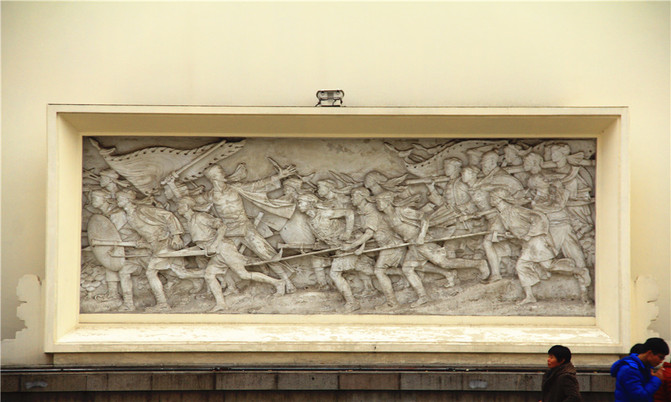
Day3: Nanjing Ming Palace Museum Site Park [Free Tickets]
Nanjing Ming Palace Ruins Park is located in the east of Xuanwu District, Nanjing City, Jiangsu Province. It is bounded by Zhongshan East Road in the south, facing Wuchaomen Park across the road, and reaches Bei 'anmen Bridge in the north. The part enclosed by Minggugong Road on the east and west sides covers an area of about 55474 square meters. The site is divided into two parts: north and south.

Nanjing Ming Palace Ruins Park

Nanjing Ming Palace Ruins Park

Nanjing Ming Palace Ruins Park

Nanjing Ming Palace Ruins Park

Nanjing Ming Palace Ruins Park

Night view of Nanjing Zhongshanmen

Day3: Nanjing Ancient Jiming Temple [Purchase Tickets]
Ancient Jiming Temple, located at the eastern foot of Jilong Mountain, is one of the oldest Buddhist temples in Nanjing.

In the first year of Yongkang in the Western Jin Dynasty (300 years), the dojo was founded.

In the first year of Datong in the Southern Dynasties (527), Emperor Wu of the Liang Dynasty built Tongtai Temple here, which was the first temple of the "480 Temple in the Southern Dynasties."

In the 20th year of Hongwu of the Ming Dynasty (1387), Zhu Yuanzhang, the founder of the Ming Dynasty, rebuilt the temple and personally titled it "Jiming Temple", which means "dancing at the sound of the rooster, working hard in the morning."

In 1958, it was changed to Nizhong Taoist Hall. Since 1983, under the leadership of the former abbot, Master Zong Cheng, and in accordance with the scale and shape of the Ming and Qing Dynasties, Jiming Temple has gradually been restored and opened to the public, becoming an important temple in Nanjing.

The ancient Jiming Temple has gradually changed from Xianxiang Taoist Hall to Ninzhong Taoist Hall. The ancient Jiming Temple integrates mountains, water, forests and temples, and the environment is very elegant. "Rooting of Roosters in Spring Dawn" is one of the 40 new scenes in Jinling.

Nanjing Ancient Jiming Temple

Nanjing Ancient Jiming Temple

Nanjing Ancient Jiming Temple

Nanjing Ancient Jiming Temple

Nanjing Ancient Jiming Temple

Nanjing Ancient Jiming Temple

Nanjing Ancient Jiming Temple

Nanjing Ancient Jiming Temple

Nanjing Ancient Jiming Temple

Nanjing Ancient Jiming Temple

Day3: Nanjing Gaochun Old Street [Free Tickets]
Gaochun Old Street is also known as Gaochun Chunxi Old Street. Old Street is located in Chunxi Town, Gaochun County, Nanjing City. It is the commercial center of Gaochun. It is a splendid pearl of China's ancient streets and the most completely preserved ancient street of the Ming and Qing Dynasties in Jiangsu Province.

Gaochun Old Street is famous for its ancient and peculiar nature. It is a national AAA tourist attraction and a provincial-level cultural relic protection unit.

Gaochun Old Street was originally named Zhengyi Street. After the victory of the Revolution of 1911, it was renamed "Zhongshan Street" in memory of the great revolutionary pioneer Dr. Sun Yat-sen.

During the Cultural Revolution, it was renamed "Dongfanghong Street." When a census of place names was conducted in 1982, the name "Zhongshan Street" was renamed.

Nanjing Gaochun Old Street

Nanjing Gaochun Old Street

Nanjing Gaochun Old Street

Nanjing Gaochun Old Street

Nanjing Gaochun Old Street

Nanjing Gaochun Old Street

Nanjing Gaochun Old Street

Nanjing Gaochun Old Street

Nanjing Gaochun Old Street

Nanjing Gaochun Old Street
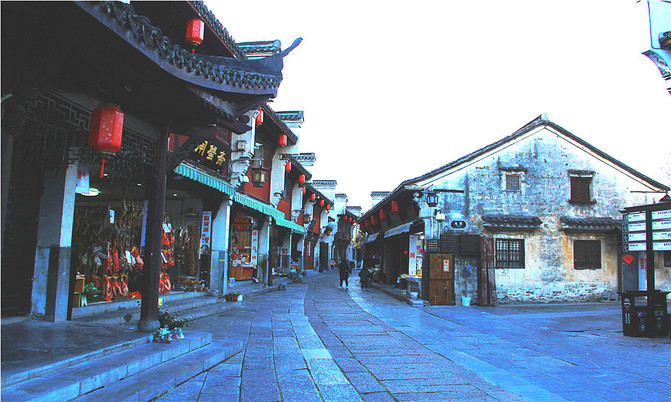
Nanjing Gaochun Old Street

Nanjing Gaochun Old Street

Nanjing Gaochun Old Street---Guanwang Temple

Nanjing Gaochun Old Street---Guanwang Temple

Nanjing Gaochun Old Street---Guanwang Temple

Nanjing Gaochun Old Street---Guanwang Temple

Nanjing Gaochun Old Street---Guanwang Temple

Nanjing Gaochun Old Street---Guanwang Temple

Nanjing Gaochun Old Street---Guanwang Temple

Nanjing Gaochun Old Street---Guanwang Temple

Nanjing Gaochun Old Street---Guanwang Temple

Nanjing Gaochun Old Street---Guanwang Temple
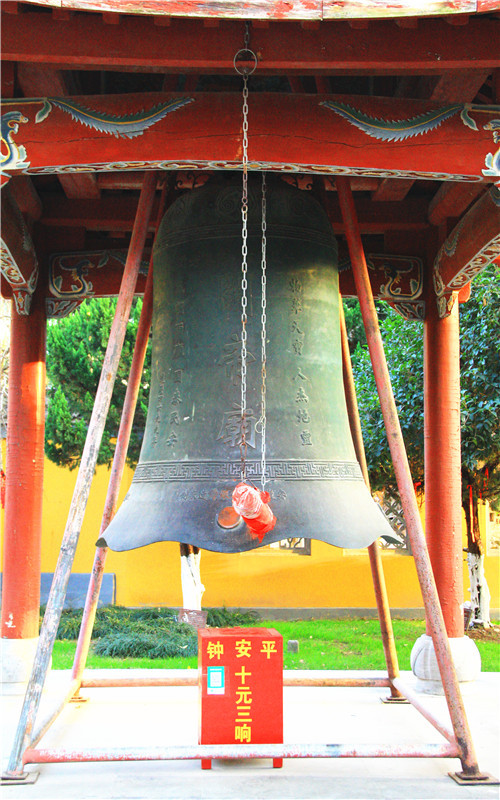
Nanjing Gaochun Old Street---Guanwang Temple

Nanjing Gaochun Old Street---Guanwang Temple

Nanjing Gaochun Old Street---Guanwang Temple

Nanjing Gaochun Old Street

Nanjing Gaochun Old Street

Nanjing Gaochun Old Street

Nanjing Gaochun Old Street

Nanjing Gaochun Old Street

Nanjing Gaochun Old Street

Nanjing Gaochun Old Street-----Former Site of the Headquarters of the First Detachment of the New Fourth Army

Nanjing Gaochun Old Street-----Former Site of the Headquarters of the First Detachment of the New Fourth Army

Nanjing Gaochun Old Street-----Former Site of the Headquarters of the First Detachment of the New Fourth Army
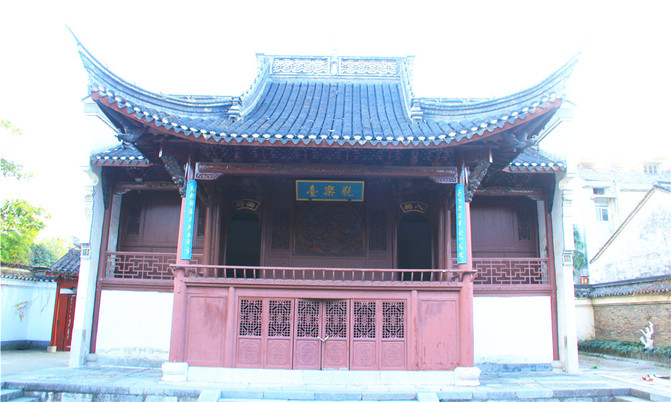
Nanjing Gaochun Old Street-----Former Site of the Headquarters of the First Detachment of the New Fourth Army

Nanjing Gaochun Old Street-----Former Site of the Headquarters of the First Detachment of the New Fourth Army

Nanjing Gaochun Old Street

Nanjing Gaochun Old Street

Day4: Sun Yat-sen Mausoleum in Zhongshan Scenic Area [Free Tickets]
Zhongshan Scenic Area is located in Zijin Mountain, Xuanwu District, Nanjing City, Jiangsu Province, referred to as Zhongshan Scenic Area. It is a famous scenic resort in China, the first batch of national-level scenic spots, the first batch of national 5A-level tourist attractions, national forest parks, national civilized scenic spots, and the top 40 tourist attractions in China.

Zhongshan Scenic Area is centered on Sun Yat-sen Cemetery and supported by the Ming Xiaoling Mausoleum and Linggu Temple. It has more than 200 scenic spots of various types and 84 tourist attractions. Among them, there is one world cultural heritage site, and the scenic area is divided into five parts: Ming Xiaoling Scenic Area, Sun Yat-sen Mausoleum Scenic Area, Linggu Scenic Area, Toutuoling Scenic Area and other scenic spots.

Sun Yat-sen mausoleum

Sun Yat-sen mausoleum

Sun Yat-sen mausoleum

Sun Yat-sen mausoleum

Sun Yat-sen mausoleum

Sun Yat-sen Mausoleum---Mausoleum Gate

Sun Yat-sen Mausoleum---Mausoleum Gate

Sun Yat-sen Mausoleum---Mausoleum Gate

Sun Yat-sen Mausoleum---Mausoleum Gate

Sun Yat-sen Mausoleum---Mausoleum Gate

Sun Yat-sen Mausoleum---Mausoleum Gate
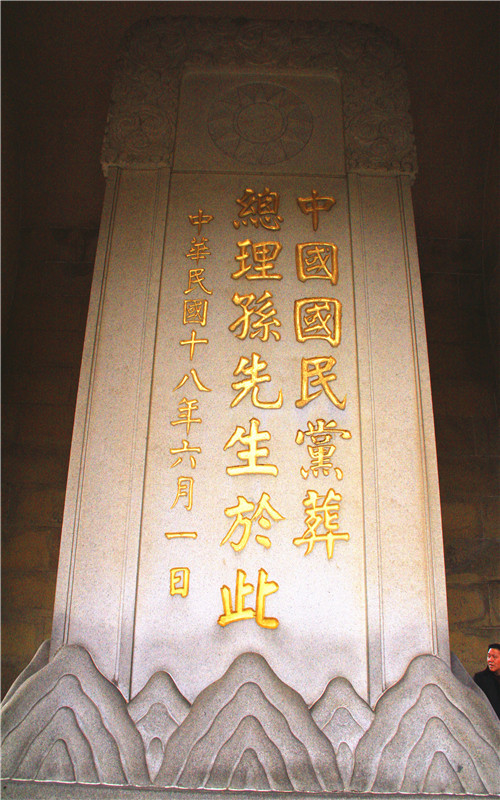
Sun Yat-sen Mausoleum---Mausoleum Gate

Sun Yat-sen mausoleum
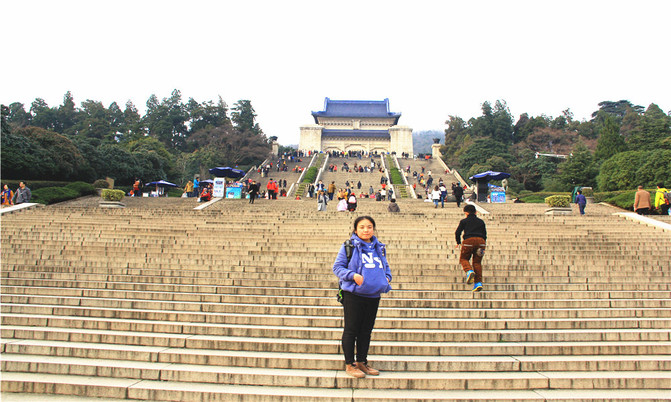
Sun Yat-sen mausoleum

Sun Yat-sen mausoleum

Sun Yat-sen mausoleum

Sun Yat-sen mausoleum

Sun Yat-sen mausoleum

Sun Yat-sen mausoleum

Sun Yat-sen mausoleum
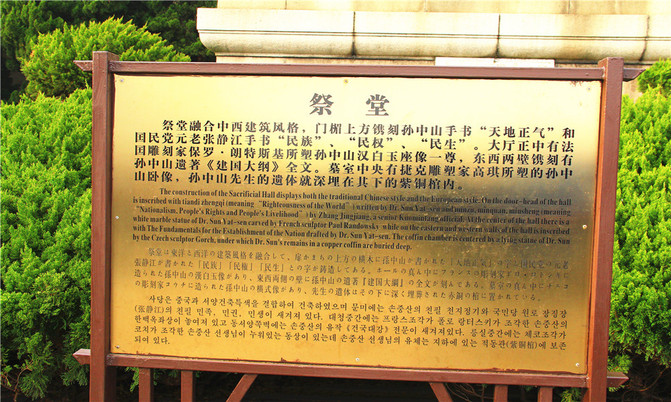
Sun Yat-sen Mausoleum Memorial Hall

Sun Yat-sen Mausoleum Memorial Hall

Sun Yat-sen Mausoleum Memorial Hall

Sun Yat-sen Mausoleum Memorial Hall

Sun Yat-sen mausoleum

Sun Yat-sen mausoleum

Day4: Meiling Palace in Zhongshan Scenic Area [Purchase Tickets]
Meiling Palace, also known as the "Official Residence of the Chairman of the National Government," is located on Xiaohong Mountain east of Sifang City in Zhongshan Scenic Area in Xuanwu District, Nanjing City. It is adjacent to Sun Yat-sen Cemetery Scenic Area in the east, Zhongshanmen Street in the south, Ming Xiaoling Scenic Area in the west, and Zijin Mountain in the north. It is called the "First Villa in the Far East."
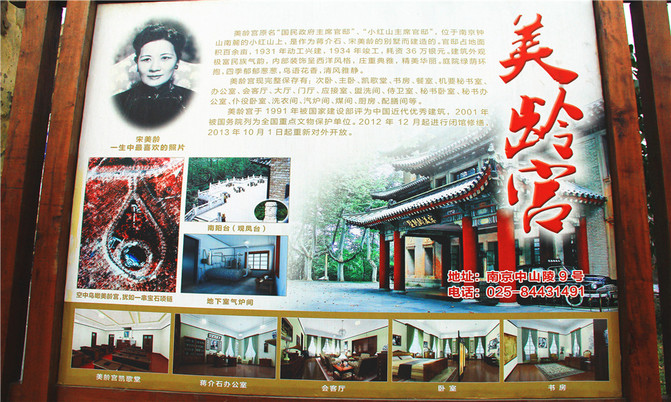
Meiling Palace was originally intended to be the residence of the Chairman of the National Government, but was later converted into a lounge for senior officials at Sun Yat-sen Mausoleum.

After the Kuomintang government moved back from Chongqing to the capital Nanjing, Chiang Kai-shek and Soong Meiling often stayed here for worship and rest, so they called it the "Meiling Palace."

In March 1984, the interior furnishings of Meiling Palace were opened to the public as before.

Meiling Palace in Zhongshan Scenic Area

Meiling Palace in Zhongshan Scenic Area

Day3: Nanjing Mingxiaoling Scenic Area [Purchase Tickets]
Ming Xiaoling Mausoleum is located under Mount Everest at Dulongfu, the southern foot of Zijin Mountain in Xuanwu District, Nanjing City, Jiangsu Province. It is adjacent to Sun Yat-sen Mausoleum to the east and Meihua Mountain to the south. It is located in Zhongshan Scenic Area. It is the joint burial tomb of Zhu Yuanzhang, the founder of the Ming Dynasty, and his queen.

Because Empress Ma was posthumously titled "Empress Xiao Ci Gao" and because she pursued filial piety to govern the world, she was named "Xiao Ling". Covering an area of more than 1.7 million square meters, it is one of the largest imperial tombs in China.
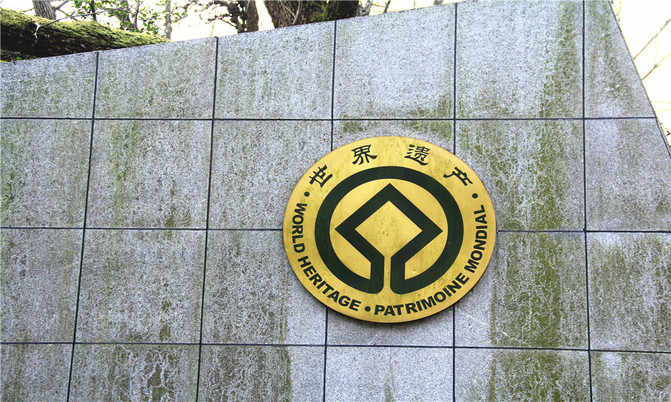
Nanjing Mingxiaoling Scenic Area

Nanjing Mingxiaoling Scenic Area
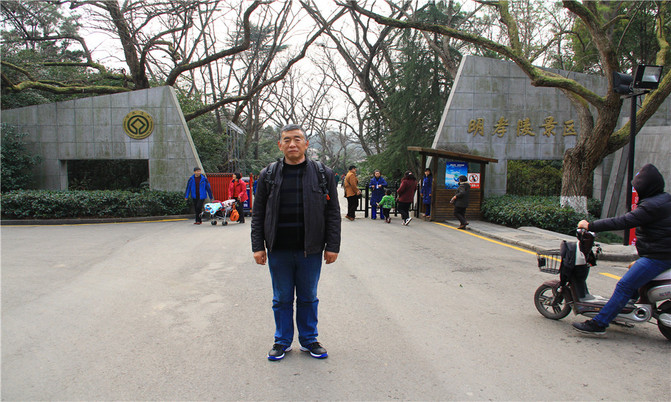
Nanjing Mingxiaoling Scenic Area

Day4: Nanjing Presidential Palace [Purchase Tickets]
The Nanjing Presidential Palace is located at No. 292 Changjiang Road, Xuanwu District, Nanjing City, Jiangsu Province. It is the largest and most completely preserved architectural complex among modern Chinese architectural relics. It is also the main representative of Nanjing's Republic of China architecture. It is an important site in modern Chinese history and has now been turned into the Museum of Modern Chinese History.

On January 1, 1912, Sun Yat-sen was sworn in as the Provisional President of the Republic of China here, which became the Presidential Office, and later the Presidential Office of the Nanjing National Government.

Nanjing presidential palace

Nanjing presidential palace

Nanjing presidential palace

Nanjing presidential palace

Nanjing presidential palace
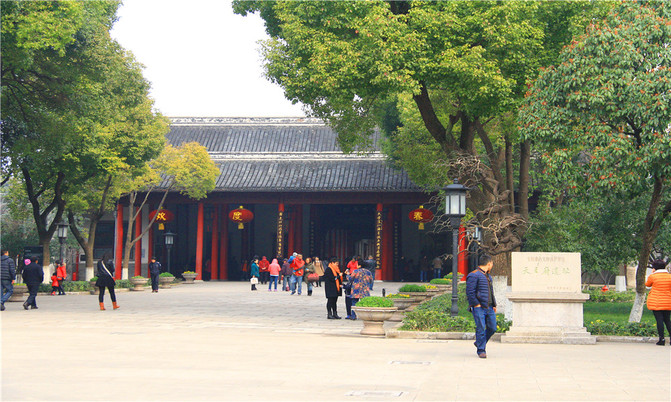
Nanjing presidential palace

Day4: Nanjing Meiyuan New Village Memorial Hall of the Communist Party of China [Free Tickets]
The Meiyuan New Village Memorial Hall of the Communist Party of China Delegation is located on both sides of Meiyuan New Village Street at the east end of Changjiang Road in the east of Nanjing City, Jiangsu Province. It consists of the former site of the Communist Party of China Delegation Office, the Historical Materials Exhibition Hall of the Nanjing Negotiation between the Kuomintang and the Communist Party, the bronze statue of Zhou Enlai, and the Zhou Enlai Library. It belongs to modern historical relics and revolutionary commemorative buildings.

From May 1946 to March 1947, a delegation of the Communist Party of China headed by Zhou Enlai held negotiations with the Kuomintang government here for 10 months and 4 days.

Nanjing Meiyuan New Village Memorial Hall

Nanjing Meiyuan New Village Memorial Hall

Nanjing Meiyuan New Village Memorial Hall

Nanjing Meiyuan New Village Memorial Hall

Nanjing Meiyuan New Village Memorial Hall

Nanjing Meiyuan New Village Memorial Hall

Nanjing Meiyuan New Village Memorial Hall

Nanjing Meiyuan New Village Memorial Hall

Nanjing Meiyuan New Village Memorial Hall

Nanjing Meiyuan New Village Memorial Hall

Nanjing Meiyuan New Village Memorial Hall

Nanjing Meiyuan New Village Memorial Hall
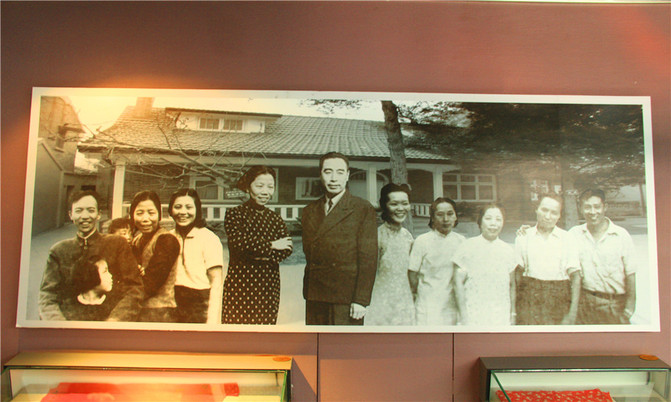
Nanjing Meiyuan New Village Memorial Hall

Nanjing Meiyuan New Village Memorial Hall

Nanjing Meiyuan New Village Memorial Hall

Nanjing Meiyuan New Village Memorial Hall

Nanjing Meiyuan New Village Memorial Hall

Nanjing Meiyuan New Village Memorial Hall

Nanjing Meiyuan New Village Memorial Hall

Nanjing Meiyuan New Village Memorial Hall

Nanjing Meiyuan New Village Memorial Hall

Nanjing Meiyuan New Village Memorial Hall

Day4: Memorial Hall for Victims of the Nanjing Massacre by the Japanese Invaders [Free Tickets]
The Memorial Hall for Victims of the Nanjing Massacre by the Japanese Invaders is located at No. 418 Shuiximen Street, Jianye District, Nanjing City, Jiangsu Province. It is commonly known as the Jiangdongmen Memorial Hall. It is located at the Jiangdongmen Mass Massacre Site of the Nanjing Massacre and the Mass Burial Site of the Victims. It is one of the first national-level first-class museums in China, the first batch of national patriotic education demonstration bases, national key cultural relics protection units, and the first batch of national-level Anti-Japanese War memorial facilities and site lists. It is also internationally recognized as one of the three major massacres during World War II.

The Jiangdongmen Memorial Hall was built to remember the atrocities of the inhuman Nanjing Massacre after the Japanese invaders captured Nanjing, the capital of China. It is a demonstration and site-type special historical memorial hall for the Chinese people to inherit the disaster of the entire nation. It is also the only one in China. A special historical exhibition hall for the Nanjing Massacre by the Japanese invaders and the host site of the National Memorial Day.

Memorial Hall for Victims of the Nanjing Massacre by the Japanese Invaders

Memorial Hall for Victims of the Nanjing Massacre by the Japanese Invaders

Memorial Hall for Victims of the Nanjing Massacre by the Japanese Invaders

Memorial Hall for Victims of the Nanjing Massacre by the Japanese Invaders

Memorial Hall for Victims of the Nanjing Massacre by the Japanese Invaders

Memorial Hall for Victims of the Nanjing Massacre by the Japanese Invaders

Memorial Hall for Victims of the Nanjing Massacre by the Japanese Invaders

Memorial Hall for Victims of the Nanjing Massacre by the Japanese Invaders

Memorial Hall for Victims of the Nanjing Massacre by the Japanese Invaders

Memorial Hall for Victims of the Nanjing Massacre by the Japanese Invaders

Memorial Hall for Victims of the Nanjing Massacre by the Japanese Invaders

Memorial Hall for Victims of the Nanjing Massacre by the Japanese Invaders

Memorial Hall for Victims of the Nanjing Massacre by the Japanese Invaders

Memorial Hall for Victims of the Nanjing Massacre by the Japanese Invaders

Memorial Hall for Victims of the Nanjing Massacre by the Japanese Invaders

Memorial Hall for Victims of the Nanjing Massacre by the Japanese Invaders

Memorial Hall for Victims of the Nanjing Massacre by the Japanese Invaders

Memorial Hall for Victims of the Nanjing Massacre by the Japanese Invaders

Memorial Hall for Victims of the Nanjing Massacre by the Japanese Invaders

Memorial Hall for Victims of the Nanjing Massacre by the Japanese Invaders

Memorial Hall for Victims of the Nanjing Massacre by the Japanese Invaders

Memorial Hall for Victims of the Nanjing Massacre by the Japanese Invaders

Memorial Hall for Victims of the Nanjing Massacre by the Japanese Invaders

Memorial Hall for Victims of the Nanjing Massacre by the Japanese Invaders

Memorial Hall for Victims of the Nanjing Massacre by the Japanese Invaders

Memorial Hall for Victims of the Nanjing Massacre by the Japanese Invaders

Memorial Hall for Victims of the Nanjing Massacre by the Japanese Invaders

Memorial Hall for Victims of the Nanjing Massacre by the Japanese Invaders

Memorial Hall for Victims of the Nanjing Massacre by the Japanese Invaders

Memorial Hall for Victims of the Nanjing Massacre by the Japanese Invaders

Memorial Hall for Victims of the Nanjing Massacre by the Japanese Invaders

Nanjing massacre
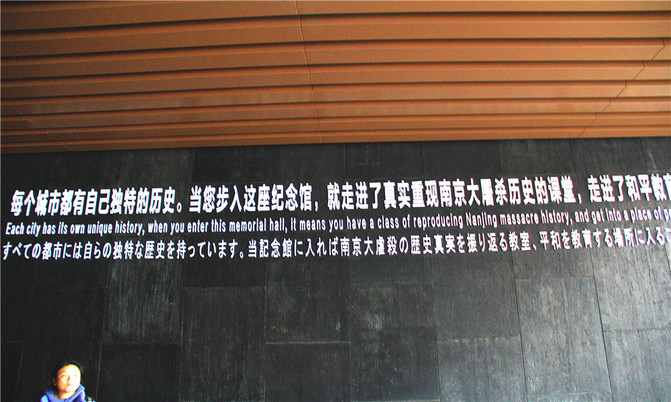
Nanjing massacre

Nanjing massacre

Nanjing massacre

Nanjing massacre

Nanjing massacre

Nanjing massacre

Nanjing massacre

Nanjing massacre

Nanjing massacre

Nanjing massacre

Nanjing massacre

Memorial Hall for Victims of the Nanjing Massacre by the Japanese Invaders

The disaster of the ancient city

The disaster of the ancient city

The disaster of the ancient city

The disaster of the ancient city

The disaster of the ancient city

The disaster of the ancient city

Footprints of historical witnesses

Footprints of historical witnesses

Footprints of historical witnesses

Footprints of historical witnesses

Crazy Snow Stele
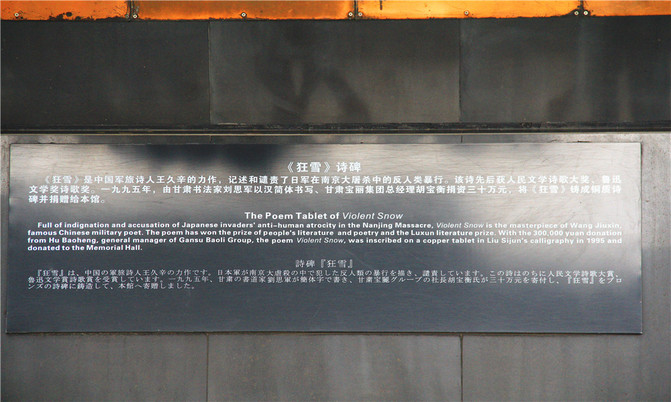
Crazy Snow Stele

Zhang Chunru [Nanjing Massacre--The Forgotten Disaster of World War II]

Zhang Chunru [Nanjing Massacre--Forgotten World War II] Author's sculpture

Memorial Hall for Victims of the Nanjing Massacre by the Japanese Invaders

Memorial Hall for Victims of the Nanjing Massacre by the Japanese Invaders

Memorial Hall for Victims of the Nanjing Massacre by the Japanese Invaders

Memorial Hall for Victims of the Nanjing Massacre by the Japanese Invaders
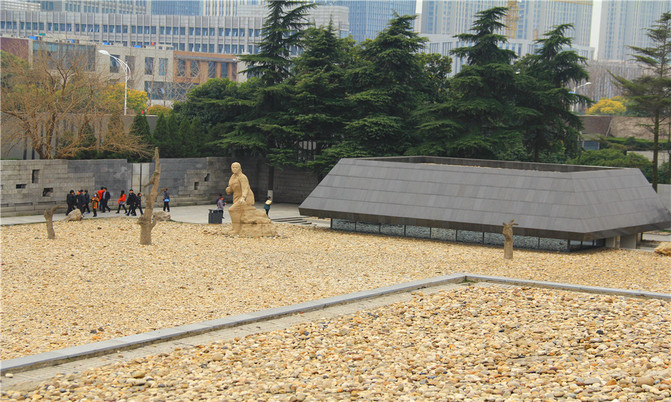
Memorial Hall for Victims of the Nanjing Massacre by the Japanese Invaders
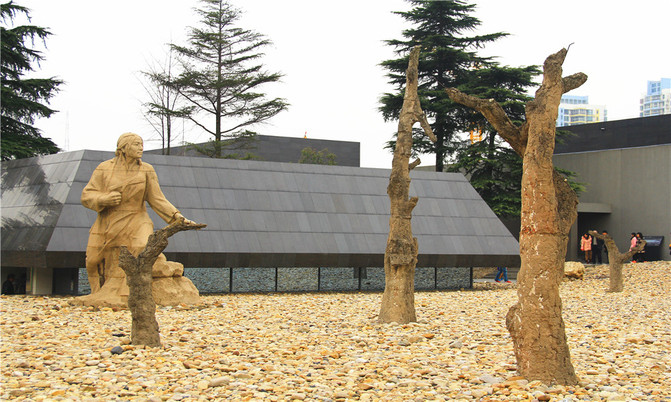
Memorial Hall for Victims of the Nanjing Massacre by the Japanese Invaders

Memorial Hall for Victims of the Nanjing Massacre by the Japanese Invaders

Memorial Hall for Victims of the Nanjing Massacre by the Japanese Invaders

Memorial Hall for Victims of the Nanjing Massacre by the Japanese Invaders

Day4: Nanjing Yuhuatai [Free Tickets]
Yuhuatai outside Zhonghua Gate is the throat of the south of Nanjing. There was a saying that the Yuhuatai is surrounded by "tombs" and "blue blood is hidden under it." It is also a memorial site of China's New Democratic Revolution and a national key cultural relics protection unit, national patriotic education demonstration base, national AAAA tourist attractions and 100 classic red tourism scenic spots are a Jiangsu provincial-level commemorative scenic spot integrating education, tourism Yuhuatai leisure and entertainment. Yuhuatai is a bright flag and an immortal monument.

Nanjing yuhuatai

Nanjing yuhuatai

Nanjing yuhuatai

navigation

Nanjing yuhuatai

Nanjing Yuhuatai Martyrs Memorial Hall

Nanjing Yuhuatai Martyrs Memorial Hall

Nanjing Yuhuatai Martyrs Memorial Hall

Nanjing Yuhuatai Martyrs Memorial Hall

Nanjing Yuhuatai Martyrs Memorial Hall

Nanjing yuhuatai

Nanjing yuhuatai

Nanjing yuhuatai

Nanjing Yuhuatai National Anthem Square

Nanjing Yuhuatai National Anthem Square

Nanjing Yuhuatai Martyrs Monument

Nanjing Yuhuatai Martyrs Monument

Nanjing Yuhuatai Martyrs Monument

We and our descendants will come here often

ever-burning lamps

ever-burning lamps

Nanjing yuhuatai

Nanjing Yuhuatai Jiangnan Second Spring

Nanjing Yuhuatai Jiangnan Second Spring

Nanjing Yuhuatai Jiangnan Second Spring

Nanjing Ancient Yuhuatai

Nanjing Ancient Yuhuatai

Nanjing Ancient Yuhuatai

Nanjing Yuhuatai Gaozuo Temple

Nanjing Yuhuatai Gaozuo Temple

Nanjing Yuhuatai Gaozuo Temple

Nanjing yuhuatai

Nanjing yuhuatai

Nanjing yuhuatai

Nanjing yuhuatai

Nanjing yuhuatai

Nanjing yuhuatai

Nanjing Dazhong Temple

Nanjing Dazhong Temple

Nanjing Dazhong Temple

Traveling may not necessarily cost much money, but not traveling may not necessarily save much money or become rich. In life, there are not many moments that truly belong to you. Living according to your mind is the best life. Take advantage of the sun and the breeze is not dry to meet the people you want to see and the scenery you want to see. This is a beautiful life

The mountains, rivers and waters along the way are connected by mountains and rivers and rolling. The winding road winding on the mountainside winds around the green mountains like streamers, becoming a unique and beautiful scenery. The hazy distant mountains are shrouded in a layer of light gauze, and they are shrouded in shadows. They are sometimes far and near in the ethereal clouds and mist. When they see this scene, they just want to sigh with emotion: "This scene should only exist in the sky. How many times can I hear it in the world?"

Sense of travel: I am originally a person who loves to move around. I have walked through countless famous mountains and rivers, rivers and lakes, from the earthly paradise of Suzhou and Hangzhou in the south to Harbin Ice City in the north, to the northernmost Mohe in China to seek the north, and from the colorful clouds in the west to the Yellow Sea and Bohai Sea in the east, and Putuo, which has visited the East China Sea. I will continue to travel south to Hainan, from the Central Plains to Sichuan and Lhasa in the southwest, and from Gansu and Shaanxi to Xinjiang in the northwest. I will be in this place I love and yearn for, looking for highlights of the itinerary. And carefully record it, most of the love for a place is for someone, something or experience, as well as the beautiful scenery. Friends should travel to Nanjing City, Jiangsu Province.

Which year did Hunan, Guizhou, Guangxi, Hubei, Anhui, and Jiangsu drive thousands of miles by myself? My travel notes in Nanjing City, Jiangsu Province [Chapter 34] ended--Please continue to browse which year, Hunan, Guizhou, Guangxi, Hubei, Anhui, and Jiangsu traveled thousands of miles by myself. My travel notes in Yangzhou, Jiangsu Province [Chapter 35]
